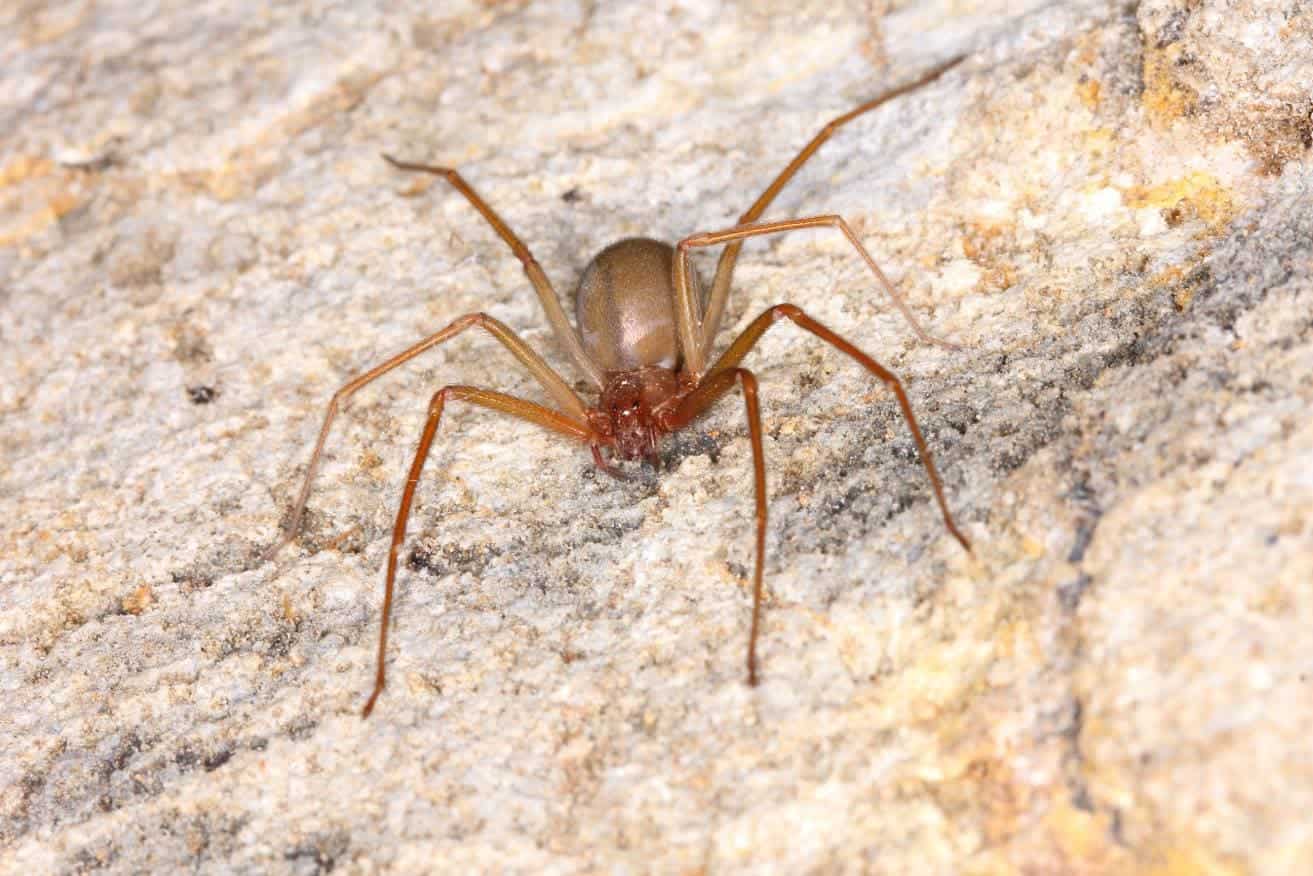As fascinating as these creatures are, spiders evoke a certain sense of curiosity and fear among people of all ages. In the hustle and bustle of New York, the spotting these arachnids at home or at work can cause distress and may be potentially harmful or be a sign of infestation.
Although most spiders in New York are not poisonous, it is good to be familiar with the spiders in the state and where they can be found.

The 12 Spiders Found in New York
1. Yellow Sac Spider
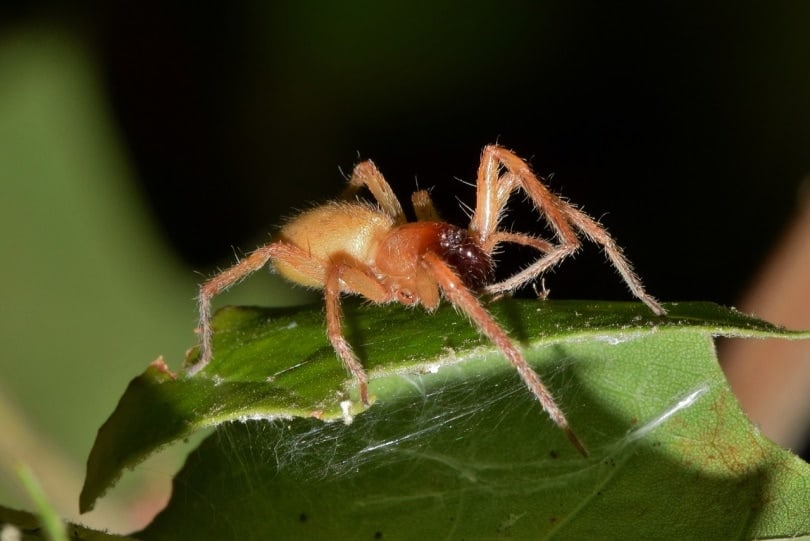
| Species: | C. Inclusum |
| Longevity: | 1 – 2 years |
| Good to own as a pet?: | Yes |
| Legal to own?: | Yes |
| Adult size: | 2.5 – 6.5 mm |
| Diet: | Carnivorous |
The Yellow Sac Spider is the only moderately poisonous spider native to New York, They are pale yellow or tan with long translucent legs and black feet. The yellow sac can be aggressive and are known to bite when they feel threatened. They usually hide in vegetation, under leaves or rocks but may wander inside homes.
Is This Spider Poisonous?
The yellow sac spiders are mildly poisonous and venomous, bites may cause itchiness and sores. Although painful, bites are not known to cause serious harm.
2. Nursery Web Spiders
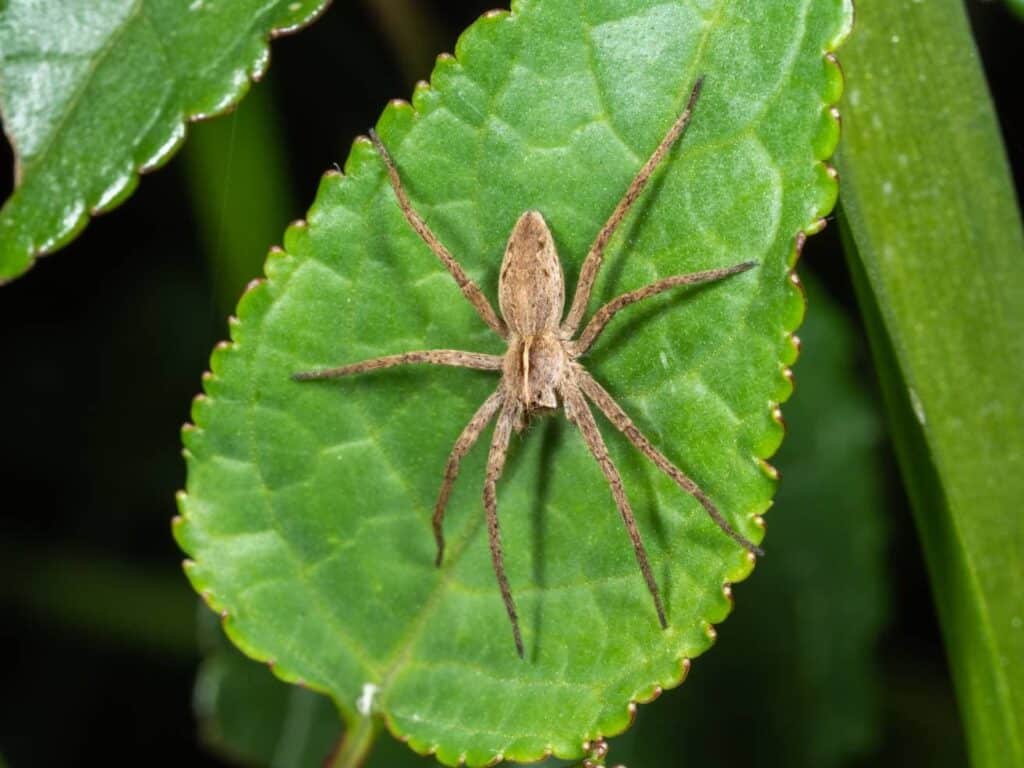
| Species: | Pisauridae |
| Longevity: | 1 year |
| Good to own as a pet?: | Yes |
| Legal to own?: | Yes |
| Adult size: | 8 mm for males, 19 mm for females |
| Diet: | Carnivorous |
Nursery web spiders may look intimidating with their appearance but are generally not harmful to humans. They have a rusty yellow, brownish color with long leg and hair that looks like suede. They are known to feed on aquatic prey, hunting on streams and riverbanks, and may find themselves near in basements of homes or business establishments.
Is This Spider Poisonous?
Their poison and venom potencies are very low, just enough to kill small insects and fish when hunting.
3. Funnel Web Spiders

| Species: | Atracidae |
| Longevity: | 2 years |
| Good to own as a pet?: | Yes |
| Legal to own?: | Yes |
| Adult size: | 1 – 5 cm |
| Diet: | Carnivorous |
Also known as the grass spider, these spiders are black or brown with a hard carapace on the front part of their body. They are known to burrow in moist, cool environments like rocks or logs. They get their namesake from the way they form their webs, tapering into a funnel-like structure trapping prey.
Is This Spider Poisonous?
Funnel web spiders are mildly toxic and may bite when they feel threatened.
4. Black and Yellow Garden Spider
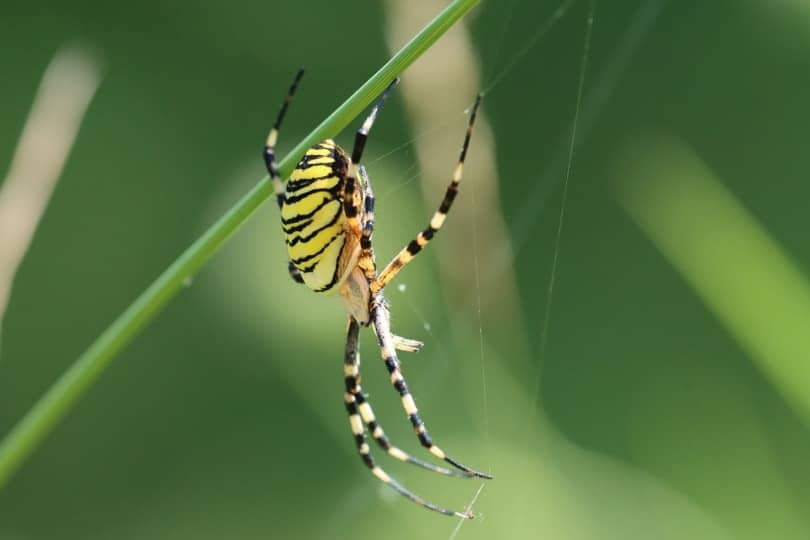
| Species: | Argiope aurantia |
| Longevity: | 1 year |
| Good to own as a pet?: | Yes |
| Legal to own?: | Yes |
| Adult size: | 9 mm for males, 28mm for females |
| Diet: | Carnivorous |
The black and yellow garden spider is one of the biggest spiders of the state. Known as orb weavers, they construct intricate webs to trap prey while also providing structures to keep birds from destroying them. They are most active during the day and are known to consistently restructure their webs, making them durable while waiting for prey. They can mostly be found in gardens and fields so finding these spiders at home or in the workplace is unlikely.
Is This Spider Poisonous?
Potency is negligible, may bite when threatened and may cause some itching or swelling.
5. American House Spider
| Species: | Achaearanea tepidariorum |
| Longevity: | 1 year |
| Good to own as a pet?: | Yes |
| Legal to own?: | Yes |
| Adult size: | 4 – 5 mm |
| Diet: | Carnivorous |
The American house spider is the most common spider found in homes. They are generally harmless to humans and may even be considered pests due to how common they are. They have large, round abdomens and are a brown, yellowish in color. You may find them hanging around minding their withing their webs to protect them from the elements while also waiting for prey.
Is This Spider Poisonous?
No, and prefer to stay away from humans. They are generally considered harmless.
6. Jumping Spider

| Species: | Salticidae |
| Longevity: | 1 – 3 years |
| Good to own as a pet?: | Yes |
| Legal to own?: | Yes |
| Adult size: | 2 – 22 mm |
| Diet: | Carnivorous |
Jumping spiders are known for their big eyes, and stubby legs. They can commonly be found hiding in plants or hidden spaces waiting for prey. They are one of the more intelligent spiders and can jump great distances when hunting for prey.
Is This Spider Poisonous?
Jumping spiders are not poisonous and are not known to bite, generally staying away from humans.
7. Wolf Spider

| Species: | Lycosidae |
| Longevity: | 1 year or less |
| Good to own as a pet?: | Yes |
| Legal to own?: | Yes |
| Adult size: | 35 mm |
| Diet: | Carnivorous |
Known for their size, wolf spiders are large and agile hunters, able to run distances in pursuit of prey. They do not use webs relying on their speed and agility. They can usually be found on the ground such as plants and dark areas on the floor. They are furry with brownish, grey hair and are considered one of the biggest spiders in the state.
Is This Spider Poisonous?
They are non-poisonous and non-venomous and would rarely bite when threatened, preferring to stay away from humans.
8. Crab Spider
| Species: | Thomisidae |
| Longevity: | 1 – 2 years |
| Good to own as a pet?: | Yes |
| Legal to own?: | Yes |
| Adult size: | 12mm |
| Diet: | Carnivorous |
Named after crabs, crab spiders scuttle and move sideways or forward, using only their back legs. Their first two pairs of legs are large and are used for grabbing prey, just like crabs! The have shades of yellow, white, and pink and are usually found sitting still on flowers waiting for prey.
Is This Spider Poisonous?
Crab spiders are not poisonous nor venomous, but bites can still be painful.
9. Sheet Web Weaver Spider
| Species: | Linyphiidae |
| Longevity: | 1 year |
| Good to own as a pet?: | Yes |
| Legal to own?: | Yes |
| Adult size: | 6mm |
| Diet: | Carnivorous |
These small spiders are very common in New York, but generally stay away from humans. They prefer staying close to the ground and would prey on small insects using small, sticky web sheets. They are small, dark spiders with a shiny appearance.
Is This Spider Poisonous?
These spiders are not toxic and are not known to bite people. They generally stay away from humans and are considered harmless.
10. Cellar Spider

| Species: | Phlocidae |
| Longevity: | 1 year |
| Good to own as a pet?: | Yes |
| Legal to own?: | Yes |
| Adult size: | 7 – 8 mm |
| Diet: | Carnivorous |
Cellar spiders may look intimidating with their long legs, but they are harmless to humans. They make big, disorganized structures of web on walls and ceilings. Females lay around a dozen eggs and wrap it in silk and carry them in their fangs. They protect themselves by quickly shooting web and wrapping themselves in it, making them invisible.
Is This Spider Poisonous?
Despite the urban legend saying they are extremely poisonous and aggressive, cellar spiders are actually harmless to humans. They are not poisonous nor venomous and are not known to bite.
11. Brown Recluse Spider
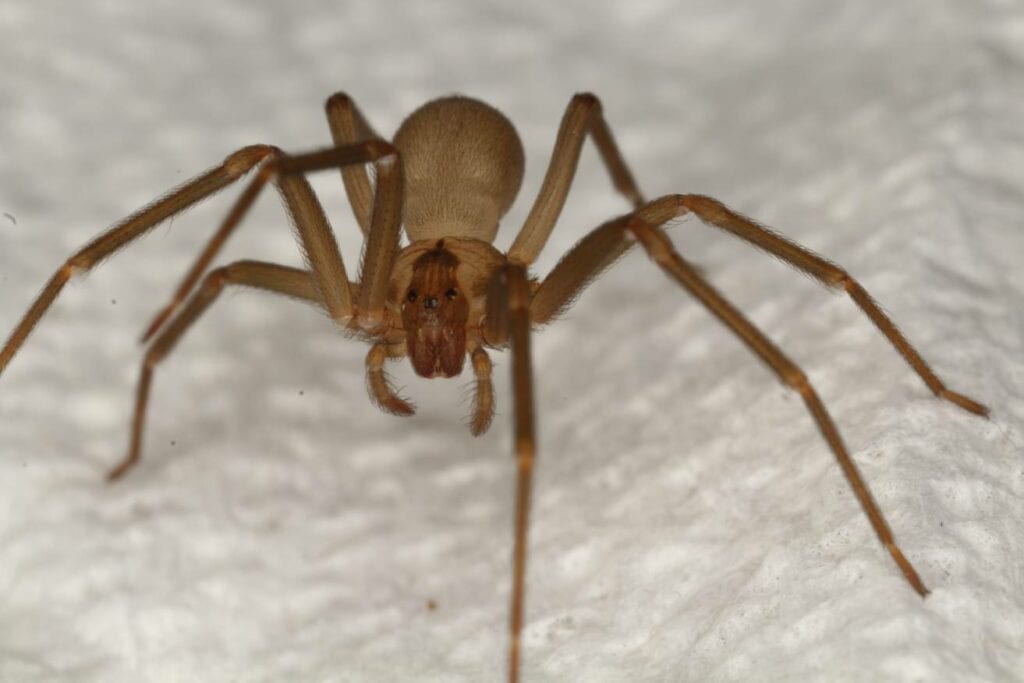
| Species: | Loxosceles reclusa |
| Longevity: | 1 – 2 years |
| Good to own as a pet?: | Yes, but not for households with children |
| Legal to own?: | Yes |
| Adult size: | 7mm |
| Diet: | Carnivorous |
Known as the violin spider, the brown recluse’ appearance has light, medium, and dark shades of brown on its body. It is not native to New York, but may have found its way through cars or luggage. It is shy and avoids human contact, choosing to hunt at night and hide under vegetation during the day.
Is This Spider Poisonous?
The brown recluse spider is poisonous and venomous, making them dangerous when bitten. The effects of a bite from a brown recluse may not be experienced until after a few hours, along with sores and blisters that may develop. They are not the aggressive type, preferring to stay away from humans but may bite when threatened.
12. Black Widow Spider
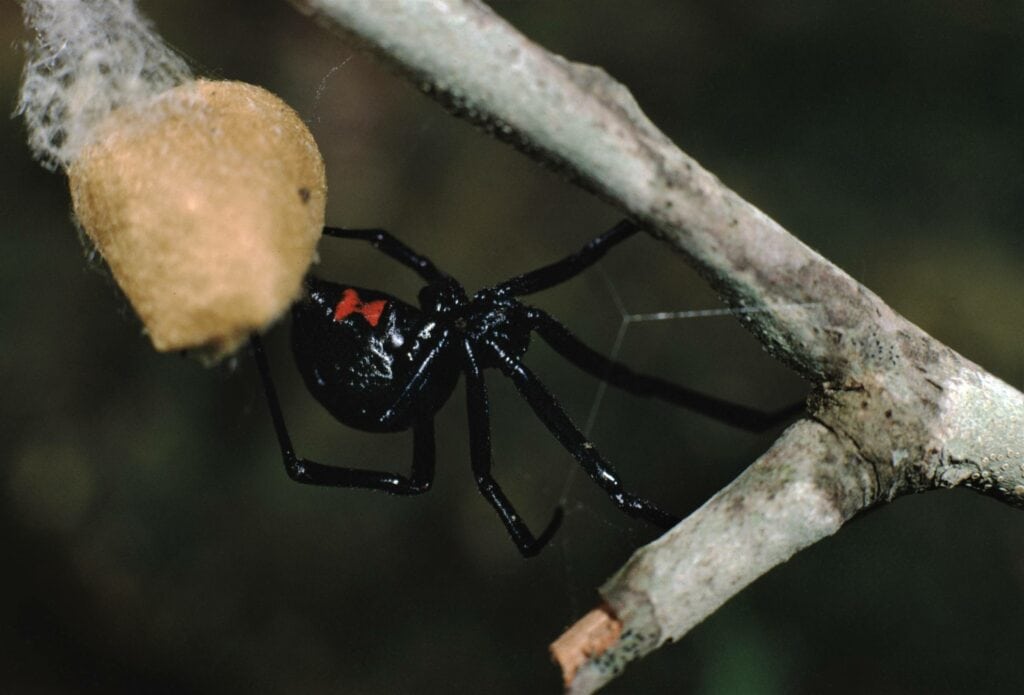
| Species: | Latrodectus |
| Longevity: | 1 – 3 years |
| Good to own as a pet?: | Yes, but not for households with children |
| Legal to own?: | Yes |
| Adult size: | 3 – 10 mm |
| Diet: | Carnivorous |
Popular for her glossy black body, long legs, and the unique red hourglass on her abdomen, the black widow spider is another spider that is not native to New York but somehow found its way to the state. Males are smaller than females, and these spiders prefer to build their webs for hunting in secluded areas such as stone walls or wooden logs. They also rarely leave their web as they constantly watch over their eggs. The black widow can be aggressive when they feel that they, or their eggs, are threatened.
Is This Spider Poisonous?
The black widow spiders are dangerous, with the venomous bites causing a stinging pain. Neurotoxins from their bites can also cause cramping, nausea, and elevated blood pressure, requiring medical attention. Bites on children and older individuals with health problems may prove fatal so it is recommended to be wary of this spider.
Poisonous Spiders in New York
Within the context of spiders, it is important to understand whether a spider is venomous or poisonous. Most spiders are poisonous, yet only some of them are venomous. Poisonous spiders release their toxins when they are ingested or when they enter the tissue, while venomous spiders release toxins through biting.
Spiders such as the yellow sac spider and the nocturnal orb-weaving spider are mildly venomous spiders native to New York, while the more dangerous black widow and brown recluse spiders are known to have found their way to New York, but are not New York natives.

Conclusion
Although most spiders in New York are harmless and prefer to stay away from humans, some of them may bite when threatened. Familiarizing with the different spiders that can be found in the state can help in preventing bites or infestation in homes or workplaces. Despite the fear surrounding the spiders of New York, there is no doubt that these creatures are both interesting and fascinating!
Related read:
Featured Image Credit by Pong Wira, Shutterstock
